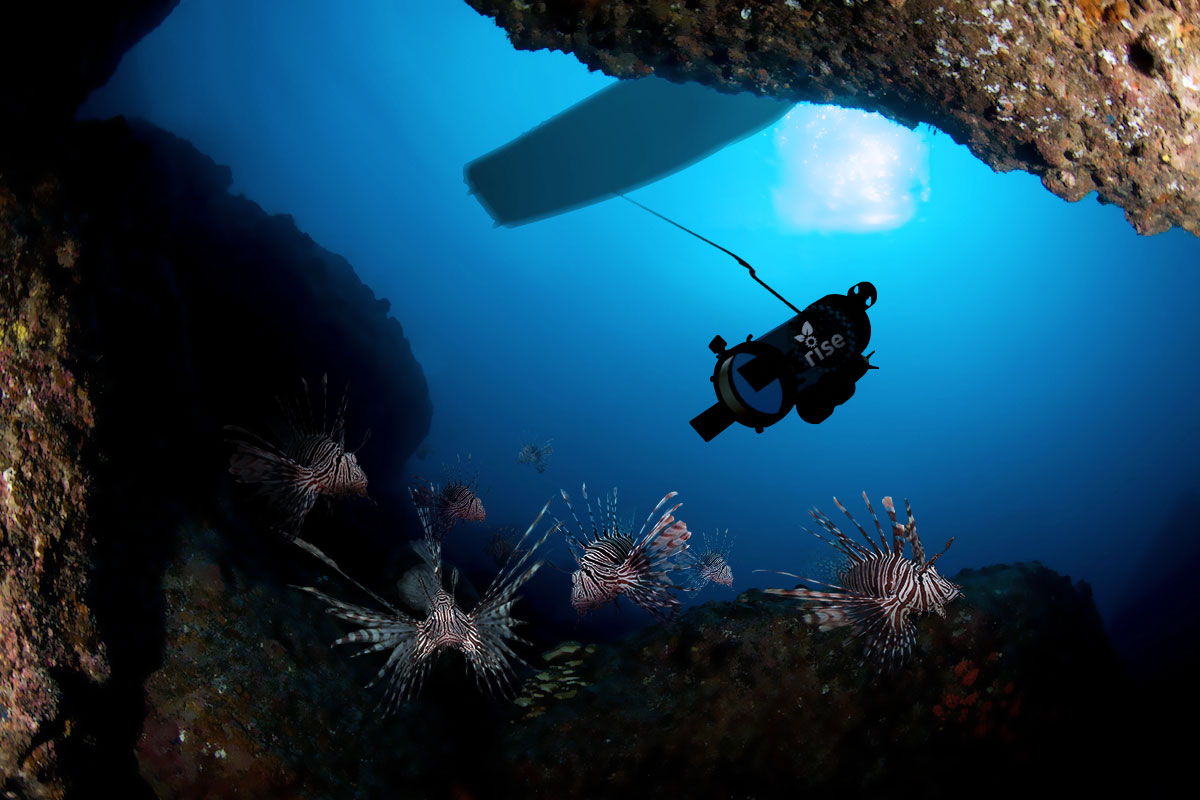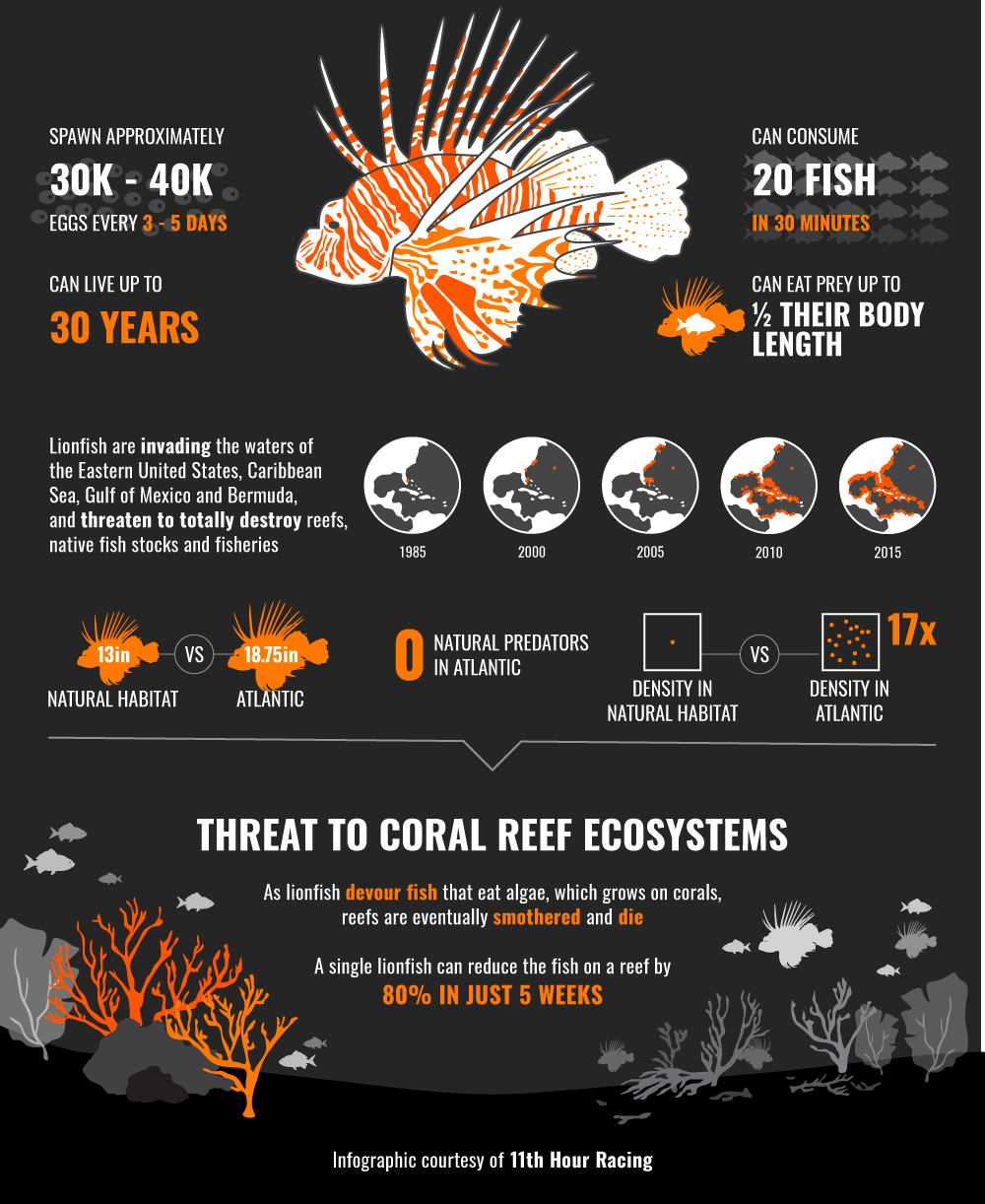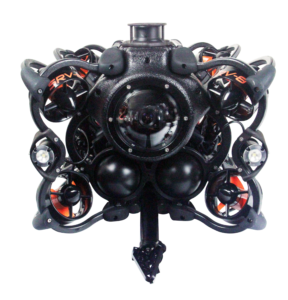
The underwater robot Guardian LF1 stuns and vacuums up the invasive lionfish from the Atlantic Ocean.
Lionfish are pretty, charismatic fish, but they are also wreaking havoc in the Atlantic Ocean, killing off coral reefs and collapsing fisheries.
Aggressive and hungry, lionfish cannot be stopped by natural predators or hunting. They have devastated waters around Florida, Bermuda, and throughout the Caribbean, and show no signs of abating anytime soon.
What can we do with a fish that can’t be stopped by man or animal? We turn to robots. One non-profit has created a fish vacuum that can literally suck lionfish out of the water.
Vacuum — yes, you heard that correctly. But stick with us, because this might be the best solution yet.
The lionfish overstayed its welcome, and then some
Lionfish are an invasive species to the Atlantic. Introduced in the 1980’s by exotic aquarium owners dumping them into the sea, this fish — which was formerly prey to nearly everything back home in the Pacific — rose to previously unattainable power in its new home.
They have not been kind rulers.
One reason is that lionfish are almost always hungry — Colin Angle, a founder of the nonprofit that created the fish vacuum, described them as having an “unquenchable appetite.” Red snapper, octopi, juvenile lobster — everything is on the menu.
The non-profit, Robots in Service of the Environment (RSE), estimates that these villains can eat twenty fish in thirty minutes — a considerable amount for a fish about 19 inches from mouth to tail.
RSE provided a detailed infographic giving the specs on the Atlantic’s pretty yet terrifying invader:

The lionfish can decimate the fish population in a coral reef by 80 percent in just 5 weeks.
Are robots the answer?
Until robots, the main way to hunt lionfish was through human divers or trained fish, but these methods were only so effective.
Human divers can specifically target lionfish, but their inability to reach certain depths prohibits them from reaching lionfish breeding grounds, where 30 to 40 thousand eggs are spawned every week.
Meanwhile, training fish like sharks to hunt lionfish, while a fun concept, carries obvious safety concerns. And they too can only go so far down.
Both of these problems are solved with RSE’s new underwater robot, called Guardian LF1. As an underwater ROV, the robot can be controlled by a human on shore and can reach depths of 400 feet, enough to reach lionfish eggs.
The Guardian LF1 in action.
This is how a fish vacuum works: the robot approaches the lionfish, stuns it with an electromagnetic current safe to use in the reef, then sucks it into its main chamber to bring back to the surface. A single robot can capture around 10 lionfish at a time.
It’s also fun to use, like a video game. You can operate the robot using a screen, where you can watch yourself chase down lionfish while navigating a coral reef.
What to do with over a million lionfish once you take them out of the ocean remains another mystery.
What to do with a million lionfish? Eat them.
People love seafood, and the lionfish is no exception. In demand for foodies living around their habitats, the lionfish offers meat that is white, flaky and just a bit buttery.

Blackened lionfish with a drizzle of honey. Photo by Katherine Boehner for the Huffington Post.
Alongside their robot, RSE wants to nurture a demand for lionfish meat.
On the day of their Kickstarter launch, which coincided with the America’s Cup sailing competition in Bermuda, RSE and the Cup held a cook-off with leading chefs, challenging them to create a flavorful dish out of lionfish.
“We humans have created this lionfish problem for ourselves, so now our hope is that we can eat our way out of it,” Rob Ruiz, one of the participating chefs and an advocate for sustainable seafood, said in an interview.


